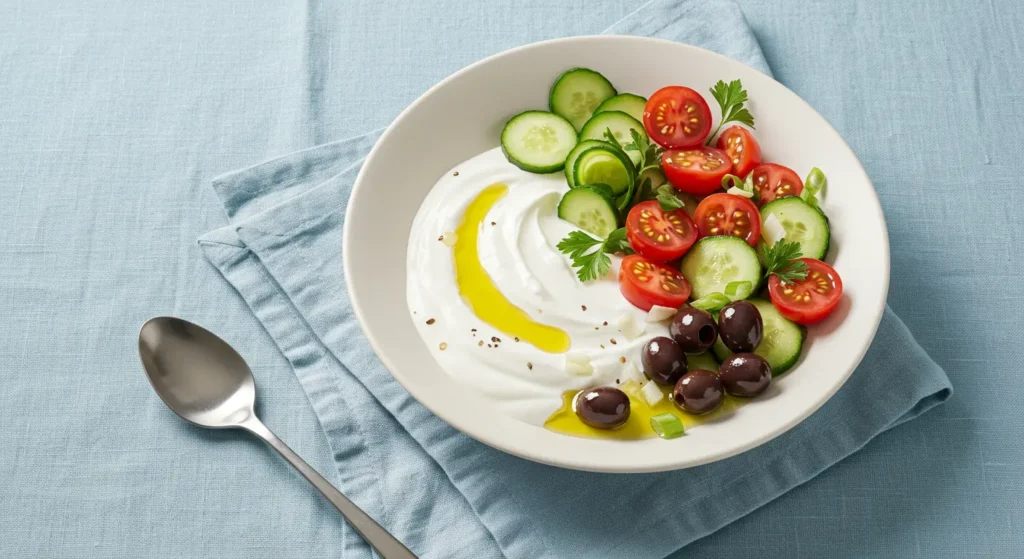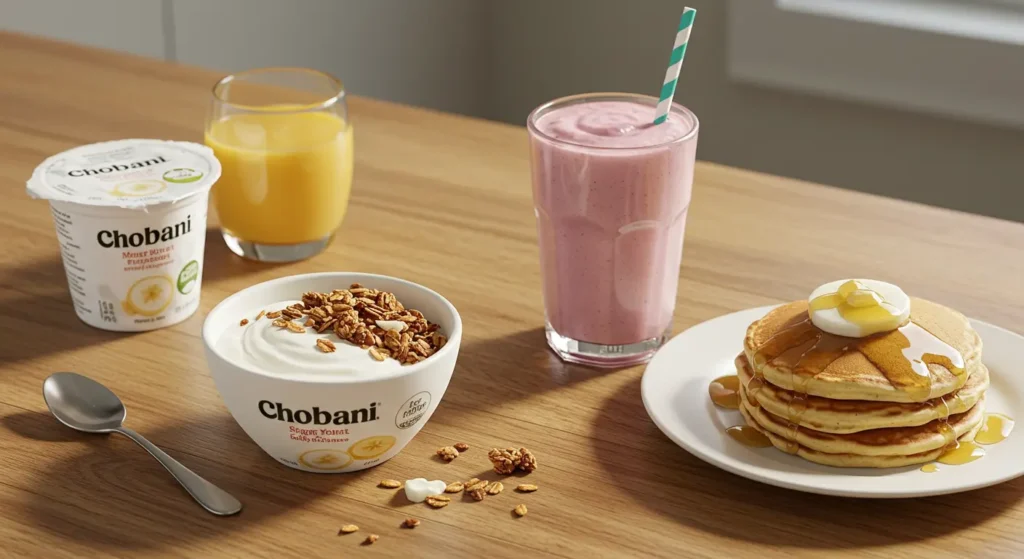Is Chobani Healthy – Why This Yogurt?
As a nutritionist and food blogger, I’ve always been fascinated by Greek yogurt’s rise to fame in American grocery stores. When Chobani first appeared on shelves in 2007, I was skeptical—could this thick, tangy yogurt really be that much better than the sweeter varieties I’d grown up with? The question “is Chobani healthy” wasn’t widely discussed then, but today it’s one of the most common nutritional inquiries I receive.
Fast forward to today, and Greek yogurt has become a staple in my kitchen, with Chobani often being my go-to brand. Many health-conscious consumers wonder: is Chobani healthy enough to deserve its reputation as a nutritional powerhouse? With so many options—non-fat, whole milk, fruit-on-the-bottom, and flips—it can be overwhelming to determine if this popular brand truly deserves its health halo.
In this comprehensive guide, I’ll break down everything you need to know about Chobani yogurt’s nutritional profile, ingredients, and potential health benefits. Is Chobani healthy for different dietary needs? Is Chobani healthy compared to regular yogurt? We’ll answer these questions and more. Whether you’re a devoted fan or simply yogurt-curious, you’ll learn how this Greek yogurt might fit into your healthy eating plan and discover some creative ways to enjoy it beyond the basic breakfast bowl.
Is Chobani Healthy – Ingredients and Preparation
Before we can definitively answer “is Chobani healthy,” let’s examine what’s actually in the container. Understanding the ingredients is crucial to determining if Chobani deserves a place in your refrigerator.
Ingredients List

Plain Chobani Greek Yogurt (Original):
- Cultured pasteurized nonfat milk
- Live and active cultures (S. thermophilus, L. bulgaricus, L. acidophilus, Bifidus, and L. casei)
- Cream (in whole milk varieties)
Flavored Varieties (additional ingredients):
- Fruit or flavor mix-ins
- Cane sugar
- Natural flavors
- Fruit and vegetable juice concentrates (for color)
- Locust bean gum (in some varieties)
When evaluating if Chobani is healthy, it’s worth noting that their ingredient list is relatively clean compared to many processed foods. The plain varieties contain just milk and cultures, while even flavored options avoid artificial preservatives and sweeteners.
Substitutions for Dietary Restrictions:
- Dairy-free: Chobani offers plant-based alternatives made from coconut, oat, or almond bases
- Sugar-free: Chobani Zero Sugar uses alternative sweeteners like stevia and monk fruit
- Low-fat: Options range from nonfat (0%) to low-fat (2%) to whole milk (4%)
Step-by-Step Guide to Incorporating Chobani in Your Diet
- Start with plain varieties for the highest protein and lowest sugar content. This gives you a clean nutritional slate to work with.
- Tip: If transitioning from sweeter yogurts, mix plain Chobani with a small amount of flavored Greek yogurt to gradually adjust your taste buds.
- Read nutrition labels carefully when selecting flavored options, as sugar content can vary significantly.
- Tip: Fruit-on-the-bottom varieties typically contain 11-16g of sugar per serving, while Chobani Flips can contain up to 20g of sugar.
- Use as a nutritious substitute in recipes calling for sour cream, mayonnaise, or oil.
- Tip: When baking, replace each cup of oil with 3/4 cup of plain Chobani for moisture without the added fat.
- Create balanced meals by pairing Chobani with other nutritious foods like fruits, nuts, or whole grains.
- Tip: The protein in Greek yogurt complements the fiber in fruits and whole grains for sustained energy.
When considering is Chobani healthy for your lifestyle, how you incorporate it into your diet matters significantly.
Notes and Tips
Storage Tips:
- Keep refrigerated at 35°F to 40°F
- Consume within 7-10 days of opening
- Do not freeze if you intend to eat it as yogurt (freezing changes the texture)
Serving Suggestions:
- Use as a base for overnight oats
- Blend into smoothies for added protein
- Create savory dips by adding herbs and spices
- Top with fresh fruit and a drizzle of honey
Make-Ahead Instructions:
- Pre-portion into small containers for grab-and-go breakfasts or snacks
- Prepare yogurt parfaits in mason jars that will stay fresh for 2-3 days
Is Chobani Healthy – Nutritional Information

One of the main reasons Greek yogurt like Chobani has gained popularity is its impressive nutritional profile. To properly address the question “is Chobani healthy,” let’s examine a detailed breakdown of what you’ll find in a typical 5.3 oz serving of plain Chobani Greek yogurt:
Nutrition Facts (Per Serving of Plain Nonfat Chobani)
| Nutrient | Amount |
|---|---|
| Calories | ~80 |
| Carbohydrates | 6g |
| Protein | 16g |
| Total Fat | 0g (nonfat variety) |
| Saturated Fat | 0g (nonfat variety) |
| Unsaturated Fat | 0g (nonfat variety) |
| Trans Fat | 0g |
| Fiber | 0g |
| Sugar | 4g (naturally occurring) |
| Cholesterol | 10mg |
| Sodium | 65mg |
| Calcium | 20% DV |
| Potassium | 8% DV |
For whole milk varieties, you’ll find approximately:
- 130 calories
- 8g total fat
- 5g saturated fat
For flavored varieties, expect:
- 120-160 calories
- 11-16g sugar (including added sugar)
- Similar protein content to plain varieties
The nutritional profile reveals why many nutritionists would answer “yes” to the question “is Chobani healthy?” Its high protein content (nearly double that of regular yogurt) helps with satiety and muscle maintenance, while its calcium supports bone health. The live and active cultures provide probiotic benefits for gut health, which emerging research links to improved immunity and even mental health.
Is Chobani Healthy – History and Cultural Significance
Greek yogurt isn’t just a modern health food trend—it has deep roots in Mediterranean and Middle Eastern culinary traditions. Understanding its history helps us appreciate why it’s become such a nutritional powerhouse and why so many people ask, “is Chobani healthy?”
Traditional Greek yogurt (known as straggisto in Greece) has been made for centuries by straining regular yogurt to remove the whey, resulting in a thicker, higher-protein product. This strained yogurt has long been a staple in Greek, Turkish, and Lebanese cuisines, where it’s used in everything from breakfast dishes to savory sauces like tzatziki.
Chobani founder Hamdi Ulukaya, a Turkish immigrant, brought this tradition to America in a significant way. After purchasing a closed yogurt plant in upstate New York in 2005, he began producing Greek yogurt using his family’s recipes. By 2012, Chobani had become America’s leading yogurt brand, fundamentally changing the American yogurt market and introducing millions to Greek yogurt’s distinctive taste and nutritional benefits.
Regional variations similar to Greek yogurt exist worldwide, including:
- Labneh in the Middle East (an even thicker strained yogurt often used as a spread)
- Skyr in Iceland (technically a cheese but similar in texture and protein content)
- Quark in Germany and Eastern Europe (a fresh acid-set cheese with similar applications)
Chobani’s rise represents more than just a business success story; it signifies a shift in American eating habits toward foods that combine flavor, convenience, and nutritional density—all factors that contribute to answering the question “is Chobani healthy?”
Is Chobani Healthy – Creative Variations
While plain Greek yogurt offers the cleanest nutritional profile, Chobani provides numerous varieties to suit different tastes and dietary needs. When considering “is Chobani healthy?” for your specific situation, these creative alternatives might help you incorporate it into your diet:
1. Lower-Sugar Option: DIY Fruit-and-Yogurt Parfait
Rather than choosing pre-sweetened fruit varieties, create your own healthier version:
- 1 cup plain nonfat Chobani Greek Yogurt
- 1/4 cup fresh berries (strawberries, blueberries, or raspberries)
- 1 tablespoon chopped nuts (almonds, walnuts, or pistachios)
- 1 teaspoon honey or maple syrup (optional)
- Dash of cinnamon
Tip: This approach gives you control over sugar content while still enjoying the fruit-and-yogurt combination that makes Chobani’s flavored varieties popular.
2. Protein-Packed Savory Option: Mediterranean Bowl
Transform plain Chobani into a satisfying savory meal:
- 1 cup plain whole milk Chobani Greek Yogurt
- 1/2 cucumber, diced
- 1/4 cup cherry tomatoes, halved
- 2 tablespoons crumbled feta cheese
- 1 tablespoon olive oil
- 1 teaspoon lemon juice
- Fresh herbs (mint, dill, parsley)
- Salt and pepper to taste
Tip: This Mediterranean-inspired bowl delivers protein, healthy fats, and vegetables in one complete meal, making it perfect for lunch or a light dinner.
3. Plant-Based Alternative: Coconut Chobani Tropical Smoothie
For those avoiding dairy but still wondering “is Chobani healthy?” for their lifestyle:
- 1 cup Chobani Non-Dairy Coconut-based yogurt
- 1/2 banana
- 1/2 cup frozen mango chunks
- 1/4 cup coconut water
- 1 tablespoon chia seeds
- 1/4 teaspoon vanilla extract
Tip: Plant-based yogurt alternatives typically have less protein than dairy Greek yogurt, so adding chia seeds helps boost the nutritional value of this option.
Is Chobani Healthy – Frequently Asked Questions

Is Chobani healthy compared to regular yogurt?
Nutritionally speaking, Chobani Greek yogurt offers several advantages over regular yogurt. It contains approximately twice the protein (16g vs. 8g per serving), fewer carbohydrates, and less lactose, making it easier to digest for some people with lactose sensitivity. The straining process that creates Greek yogurt removes some of the whey, resulting in a thicker texture and more concentrated nutrients. However, “better” depends on your specific nutritional needs and preferences.
Is Chobani healthy despite its sugar content?
Plain Chobani Greek yogurt contains approximately 4g of naturally occurring sugar (lactose) per 5.3oz serving, which is considered low. However, flavored varieties can contain between 11-16g of total sugar per serving, with much of that being added sugar. Chobani Flip products, which include mix-ins like chocolate pieces or cookie crumbs, can contain up to 20g of sugar. For context, the American Heart Association recommends limiting added sugar to 25g daily for women and 36g for men. So while plain Chobani is healthy, flavored options should be consumed mindfully.
Is Chobani healthy compared to other Greek yogurt brands?
Chobani’s nutritional profile is comparable to other major Greek yogurt brands like Fage and Oikos. All offer high-protein, cultured dairy products with similar macronutrient breakdowns in their plain varieties. Differences typically appear in flavored options, where brands vary in their sweetening approaches and ingredient lists. Chobani has positioned itself as using more natural ingredients, avoiding artificial sweeteners and preservatives in most of their products.
Is Chobani healthy enough to eat every day?
For most people, consuming Chobani Greek yogurt daily can be part of a healthy diet. Its high protein content and probiotic benefits make it a nutritious choice for regular consumption. However, if choosing flavored varieties, be mindful of the added sugar content. Those with dairy allergies, veganism preferences, or severe lactose intolerance should opt for Chobani’s plant-based alternatives or other non-dairy foods that provide similar nutrients.
How long does it take to prepare meals with Chobani?
One of Chobani’s greatest advantages is its convenience. Ready-to-eat varieties require zero preparation time. Using Chobani as an ingredient in recipes typically adds only 1-5 minutes to preparation time. More complex recipes like overnight oats or layered parfaits might take 5-10 minutes to assemble but can be prepared in advance.
Is Chobani Healthy – Final Thoughts
After examining the nutritional content, ingredients, and versatility of Chobani Greek yogurt, the answer to “is Chobani healthy?” is generally yes—with some important caveats.
Plain Chobani Greek yogurt offers an impressive nutritional package: high-quality protein, beneficial probiotics, calcium, and other essential nutrients with minimal fat and sugar. This makes it an excellent choice for supporting digestive health, muscle maintenance, and overall nutrition. The plain varieties, in particular, deserve their healthy reputation.
However, as with many foods, the health value decreases as processing and added ingredients increase. When evaluating “is Chobani healthy?” for flavored varieties, we must acknowledge that while still nutritious in many respects, they contain added sugars that should be consumed mindfully. Chobani Flip products, with their cookie and candy mix-ins, are better viewed as occasional treats rather than everyday health foods.
The key to incorporating Chobani healthfully into your diet lies in making informed choices based on your nutritional needs and health goals. Opt for plain varieties when possible, be mindful of portions with flavored options, and remember that even nutritious foods like Greek yogurt should be part of a varied diet rich in different food groups.
Whether you’re enjoying it with fresh fruit for breakfast, using it as a sour cream substitute, or blending it into a post-workout smoothie, Chobani Greek yogurt can be a delicious and nutritious addition to your eating plan.
I’d love to hear how you incorporate Greek yogurt into your meals! Leave a comment with your favorite Chobani recipe or preparation method, and let’s continue building a community of health-conscious food lovers.


3 thoughts on “Is Chobani Healthy? 7 Surprising Facts About This Popular Greek Yogurt”